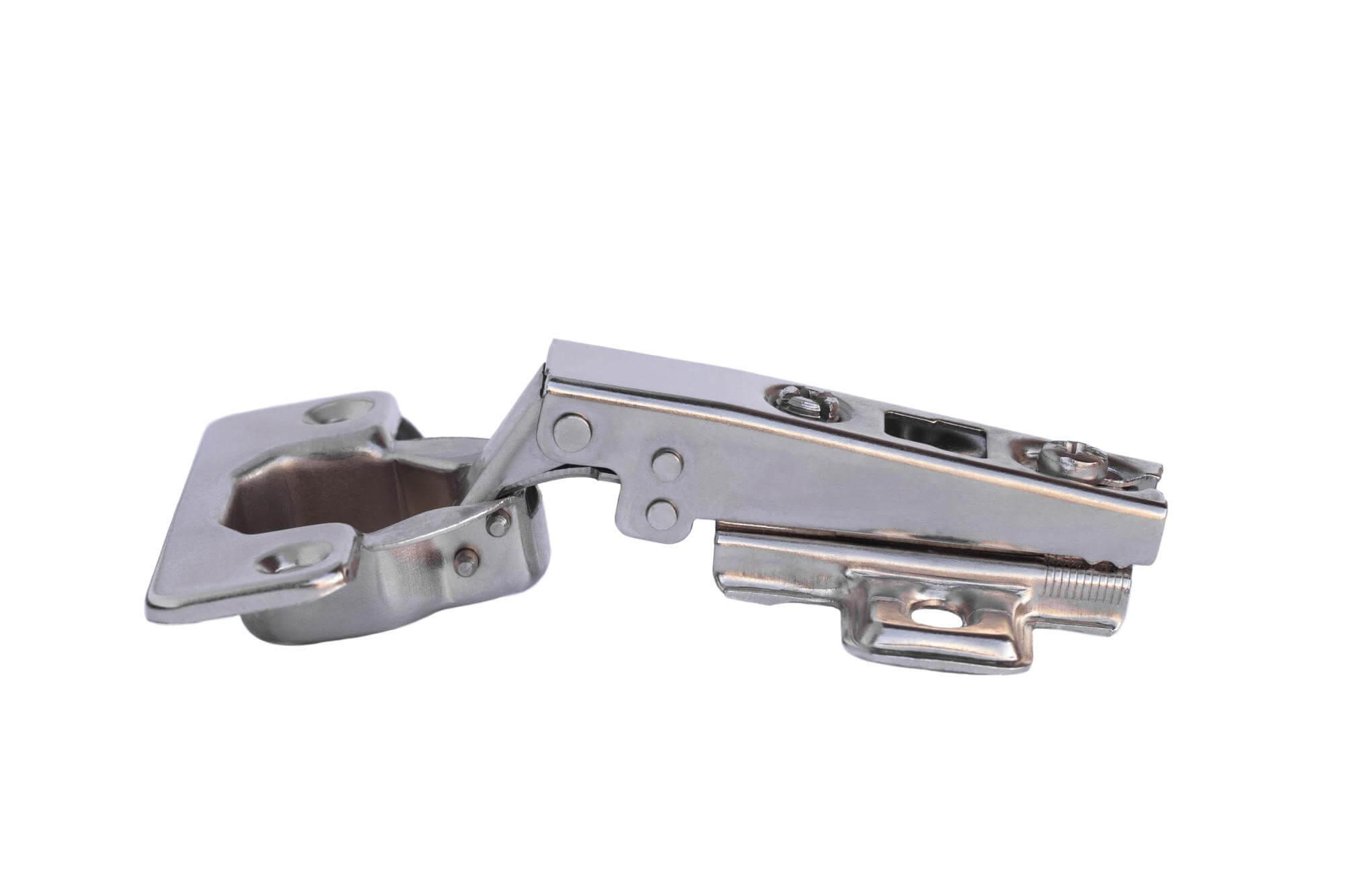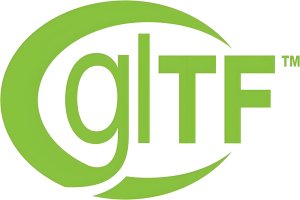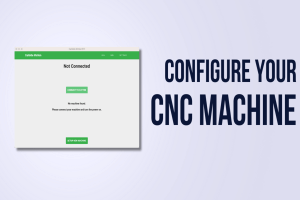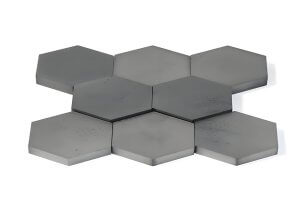Introduction
In today’s fast-paced manufacturing environment, industries such as automotive, aerospace, and furniture production rely on precision components like sheet metal hinges. Hinges may seem like a small part of the larger assembly, but their precision and durability are critical to the overall performance of many products. This is where advanced manufacturing technologies like CNC machining and laser cutting come into play.
CNC (Computer Numerical Control) machining and laser cutting have revolutionized how metal components are designed and produced. By combining these technologies, manufacturers can achieve higher precision, reduce waste, and improve efficiency in producing sheet metal hinges. Whether you’re a supplier looking to source high-quality hinges or a manufacturer aiming to improve your production process, understanding how these two methods work together is essential
In this article, we’ll explore how CNC machining and laser cutting are used in sheet metal hinge production, focusing on the benefits, material considerations, and overall improvements in efficiency and quality.
CNC Machining for Sheet Metal Hinges
CNC machining has become a cornerstone of modern manufacturing due to its ability to produce precise, high-quality parts repeatedly. In sheet metal hinge production, CNC machines play a pivotal role by offering:
- Precision: CNC machining allows for the production of metal parts with incredibly tight tolerances, often down to the micrometer. For hinges, which need to move smoothly and fit perfectly within an assembly, this level of precision is crucial.
- Repeatability: One of the biggest advantages of CNC machining is the ability to produce identical parts consistently, which is essential when manufacturing thousands of hinges for large projects. Every hinge needs to be identical to ensure reliable functionality.
- Customization: CNC machining makes it easy to switch designs and produce customized parts for different applications. Whether you need a specific hinge size or shape, CNC technology allows manufacturers to modify programs quickly, reducing downtime between production runs.
Types of CNC Machines Used in Hinge Manufacturing:
- CNC Milling Machines: Milling machines are often used to shape the hinge body and other intricate parts. They are highly versatile and can handle various metal types.
- CNC Lathes: For cylindrical or rounded hinge components, CNC lathes provide precise cuts and smooth finishes.
- CNC Punching Machines: These machines can quickly create holes and notches in sheet metal, which are often required in hinge designs.
In high-temperature environments, such as those found in the automotive and aerospace industries, hinges made from high-temperature alloys are critical. CNC machining is capable of working with materials like stainless steel, aluminum, and other high-strength alloys that are commonly used in hinges due to their durability and resistance to corrosion.
For example, stainless steel sheet metal hinges are commonly CNC machined due to their strength and resistance to extreme conditions. The precise nature of CNC machining ensures that these materials are formed with minimal waste and maximum efficiency.
Laser Cutting and Its Role in Sheet Metal Fabrication
Laser cutting has transformed the sheet metal industry by offering a non-contact method of cutting materials with precision and speed. In the context of sheet metal hinge production, laser cutting plays a critical role in shaping, cutting, and perforating the metal sheets used to form hinge components.
How Laser Cutting Works
Laser cutting utilizes a focused laser beam to melt, burn, or vaporize materials, creating clean, accurate cuts. The laser beam is directed onto the material surface by a computer-controlled system, which follows a pre-programmed design.
In hinge manufacturing, this technique is valuable because it can:
- Achieve High Precision: The laser’s focused energy ensures extremely fine cuts with minimal waste. The narrow cutting kerf (width of the cut) helps manufacturers maximize material usage, which is critical for cost efficiency.
- Handle Complex Geometries: Laser cutting can handle intricate designs and shapes that are often required for metal hinges. This is particularly useful for hinges that need to meet specific aesthetic or functional requirements.
- Cut a Wide Range of Materials: Laser cutting is versatile enough to work on different metals like stainless steel, aluminum, brass, and even advanced alloys. This flexibility allows manufacturers to switch between materials without changing cutting tools.
Benefits of Laser Cutting in Hinge Production
- Speed: Laser cutting is significantly faster than traditional mechanical cutting methods. The process can cut through metal sheets quickly and efficiently, reducing production time.
- Clean Edges: Laser cutting produces smooth and burr-free edges, which means less post-processing work is required. This is essential for sheet metal hinges that need to be assembled without further modifications.
- Flexibility: Laser cutters can switch between various thicknesses of metal without needing tool changes, allowing for a streamlined production process.
Compared to traditional methods, such as mechanical cutting or shearing, laser cutting offers a higher degree of accuracy, particularly when working with thin sheet metals. For hinge production, this results in hinges that are not only functional but also have a superior finish and fit.
Comparing Laser Cutting and Traditional Methods
To highlight the benefits of laser cutting, here’s a comparison of the main features of laser cutting versus mechanical cutting:
| Feature | Laser Cutting | Mechanical Cutting |
|---|---|---|
| Precision | Very high precision, with cuts as small as 0.1mm | Moderate, dependent on tool wear and setup |
| Cutting Speed | Fast, especially for complex shapes | Slower, especially with intricate designs |
| Edge Quality | Smooth, burr-free edges | Often requires deburring or further finishing |
| Material Flexibility | Can cut a wide variety of metals and thicknesses | Limited to specific materials and thicknesses |
| Tool Wear | No direct contact, minimal wear | High wear, requiring frequent maintenance |
As this table shows, laser cutting offers substantial benefits over traditional methods in terms of speed, precision, and overall quality.
Advantages of Combining CNC Machining and Laser Cutting in Hinge Production
While CNC machining is ideal for shaping and forming individual components of sheet metal hinges, laser cutting excels at rapidly cutting out the necessary parts from sheet metal. When combined, these two technologies create a seamless production process that maximizes efficiency and precision.
Here’s how combining these two methods enhances hinge production:
- Improved Production Speed: CNC machining allows for precise shaping, while laser cutting quickly handles the initial cutting of the metal sheets. Together, they streamline the entire production process.
- Better Material Usage: Laser cutting’s precision ensures minimal waste, which is complemented by CNC machining’s ability to shape intricate hinge components without excess material loss.
- Enhanced Customization: Combining CNC machining with laser cutting makes it easier to produce custom hinge designs. For example, CNC can handle detailed milling or punching of hinge joints, while laser cutting can create specific patterns or perforations on the hinge’s body.
Material Considerations for Sheet Metal Hinges
The choice of material is essential in determining the quality, durability, and overall functionality of sheet metal hinges. Below are some of the most common materials used in hinge production, along with their properties:
| Material | Strength | Corrosion Resistance | Machinability | Common Applications |
|---|---|---|---|---|
| Stainless Steel | High | Excellent | Moderate | Used in outdoor and industrial environments |
| Aluminum | Moderate | Good | High | Lightweight applications, including furniture |
| Brass | Moderate | Excellent | High | Decorative hinges, electrical components |
| High-Temp Alloys | Very High | Excellent | Low | Aerospace and automotive components |
Processing Challenges with High-Temperature Alloys
High-temperature alloys, such as Inconel or titanium, are used in industries where durability and heat resistance are critical. However, they present unique challenges during machining:
- Tool Wear: These alloys are highly abrasive, leading to significant tool wear in CNC machines.
- Cutting Speed: The cutting speed must be carefully controlled to prevent excessive heat buildup, which can damage both the tool and the workpiece.
- Surface Finish: Achieving a smooth surface finish requires careful monitoring of cutting conditions, particularly when using CNC lathes or milling machines.
Laser cutting can assist by creating clean cuts on these materials, minimizing the risk of tool wear and providing better overall material handling.
Real-Life Applications and Case Studies
Industries such as automotive, aerospace, and furniture manufacturing often rely on CNC machining and laser cutting for their sheet metal hinge production. For example, in the automotive industry, precise hinges are essential for doors, hoods, and trunk lids. The combination of laser cutting and CNC machining allows manufacturers to produce robust, reliable, and corrosion-resistant hinges that meet safety and performance standards.
FAQs
- What is the difference between CNC machining and laser cutting?
CNC machining involves shaping parts through milling, turning, and drilling, while laser cutting uses a focused laser beam to cut materials. Both methods complement each other in metal fabrication. - Can laser cutting be used for all types of sheet metal?
Yes, laser cutting is versatile and can be used for various metals, including stainless steel, aluminum, brass, and high-temperature alloys. - How does CNC machining ensure precision in hinge production?
CNC machines use computer-controlled programs to ensure that each part is machined with high precision and repeatability, essential for producing identical hinges. - What are the advantages of using high-temperature alloys for hinges?
High-temperature alloys offer excellent strength and heat resistance, making them ideal for demanding applications in aerospace, automotive, and industrial environments. - How does laser cutting reduce waste in sheet metal production?
Laser cutting’s narrow cutting kerf ensures that minimal material is wasted during the cutting process, optimizing material usage and reducing costs. - What types of finishes can be applied to sheet metal hinges?
Hinges can be finished with various treatments, including anodizing, powder coating, or polishing, to improve their durability and aesthetic appeal. - How does combining CNC machining and laser cutting improve efficiency?
By combining these two technologies, manufacturers can quickly cut and shape components with minimal downtime, improving overall production efficiency. - Is laser cutting suitable for large-scale production?
Yes, laser cutting is ideal for both small and large-scale production due to its speed, precision, and ability to handle high volumes without tool wear.
Other Articles You Might Enjoy
- From Vision to Reality: CNC Machining for Custom Furniture Design
Introduction to CNC Machining in Custom Furniture Design The advent of computer numerical control (CNC) machining has revolutionized the field of custom furniture design, allowing precise and intricate patterns to…
- Comparing Machinability of Various Tool Steels: What's the Best Choice?
Understanding Tool Steels and their Machinability Tool steels are referred to as an extensive variety of carbon and alloy steels known for their distinctive hardness, abrasion resistance, and ability to…
- High-Speed Steel vs. Carbide in CNC Tooling: Life Span and Performance Showdown?
Introduction to High-Speed Steel and Carbide in CNC Tooling In the world of Computer Numerical Control (CNC) tooling, two materials have emerged as key players: high-speed steel (HSS) and carbide.…
- Unraveling Bead Blasting in CNC Machining(cnc laser cutting Geoffrey)
CNC machining continues to be a crucial player in manufacturing due to its ability to produce complex, high-quality parts on a large scale. One of the techniques applied within this…
- CNC Lathe Machining Services for Brass Parts
CNC Lathe Machining Services for Brass Parts CNC, or Computer Numerical Control, lathe machining service is a modern manufacturing process that utilizes computerized controls to manage and manipulate machine tools…
- Transforming the Marine Industry with CNC Machined Titanium Parts
Introduction to CNC Machining and Titanium Use in Manufacturing Starting off with a brief explanation, Computer Numeric Control (CNC) is an advanced machining process that revolutionizes how parts are manufactured.…






